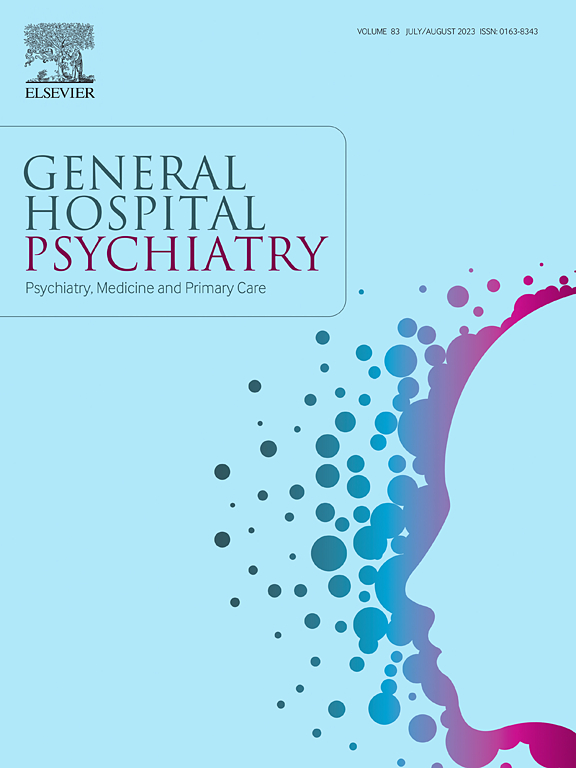以创伤为重点的循证心理治疗治疗创伤后应激障碍的分娩方式与治疗剂量和密度之间的关系
IF 3.7
2区 医学
Q1 PSYCHIATRY
引用次数: 0
摘要
针对创伤后应激障碍(PTSD)的推荐循证心理疗法(ebp),包括认知加工疗法(CPT)和长时间暴露疗法(PE),正在通过视频远程医疗以高速率提供。尽管临床试验表明,创伤后应激障碍ebp的治疗剂量在面对面和视频远程医疗模式之间相似,但大规模研究尚未调查这在常规临床实践中是否保持一致。为了填补这一空白,我们在退伍军人健康管理局(VHA)中确定了从2022年4月至2023年4月启动PTSD EBP的全国退伍军人样本(n = 23,812)。我们测量了PTSD EBP的适当剂量(6个月内接受8次或更多)和治疗密度(14周内的治疗次数)。我们使用贝叶斯层次逻辑回归(用于二分类充足剂量结果)和负二项回归(用于计数密度结果)来了解不同给药方式下治疗剂量和密度的风险调整差异。与面对面治疗相比,通过视频远程医疗接受至少一半创伤后应激障碍EBP治疗的退伍军人接受足够剂量治疗的风险调整几率更高(MPOR = 1.19, 90% CI = 1.10, 1.29; ROPE = 44.0%);然而,不同治疗方式的治疗密度相似(MPRR = 0.98; 90% CI = 0.91, 1.05)。互动表明,视频远程医疗提供的PE指标略差于面对面医疗。结果表明,创伤后应激障碍ebp可在常规临床实践中通过视频远程医疗进行,治疗剂量和密度与现场治疗相似。未来的研究需要了解治疗剂量和密度的相关性与给药方式的相互作用有多重要。本文章由计算机程序翻译,如有差异,请以英文原文为准。
Associations between delivery modality and treatment dose and density of trauma-focused evidence-based psychotherapy for posttraumatic stress disorder
Recommended evidence-based psychotherapies (EBPs) for posttraumatic stress disorder (PTSD), including Cognitive Processing Therapy (CPT) and Prolonged Exposure Therapy (PE) are being delivered by video telehealth at high rates. Although clinical trials suggest that the treatment dose of PTSD EBPs is similar between in-person and video telehealth modalities, large-scale studies have not investigated whether this remains consistent in routine clinical practice. To fill this gap, we identified a national sample of veterans who initiated PTSD EBP from 4/2022–4/2023 (n = 23,812) in the Veterans Health Administration (VHA). We measured adequate dose (receipt of eight or more in six months) and treatment density (number of sessions in 14 weeks) of PTSD EBP. We used Bayesian hierarchical logistic regression (for the dichotomous adequate dose outcome) and negative binomial regression (for the count density outcome) to understand the risk-adjusted differences in treatment dose and density across delivery modalities. Veterans who received at least half of their PTSD EBP via video telehealth had a higher risk-adjusted odds of receiving an adequate dose compared to in-person treatment (MPOR = 1.19, 90 %CI = 1.10, 1.29; ROPE = 44.0 %); however, treatment density was similar across modalities (MPRR = 0.98; 90 % CI = 0.91, 1.05). Interactions suggested slightly worse metrics in PE delivered by video telehealth than in-person. Results suggested that PTSD EBPs can be delivered via video telehealth in routine clinical practice with similar treatment dose and density to in-person treatment. Future research is needed to understand how important correlates of treatment dose and density may interact with delivery modality.
求助全文
通过发布文献求助,成功后即可免费获取论文全文。
去求助
来源期刊

General hospital psychiatry
医学-精神病学
CiteScore
9.60
自引率
2.90%
发文量
125
审稿时长
20 days
期刊介绍:
General Hospital Psychiatry explores the many linkages among psychiatry, medicine, and primary care. In emphasizing a biopsychosocial approach to illness and health, the journal provides a forum for professionals with clinical, academic, and research interests in psychiatry''s role in the mainstream of medicine.
 求助内容:
求助内容: 应助结果提醒方式:
应助结果提醒方式:


